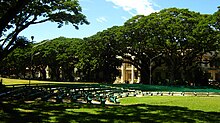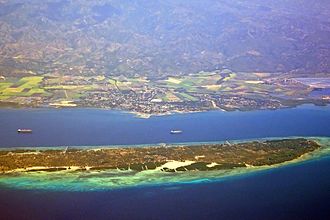
The Visayas, or the Visayan Islands, are one of the three principal geographical divisions of the Philippines, along with Luzon and Mindanao. Located in the central part of the archipelago, it consists of several islands, primarily surrounding the Visayan Sea, although the Visayas are also considered the northeast extremity of the entire Sulu Sea. Its inhabitants are predominantly the Visayan peoples.

In the Philippines, provinces are one of its primary political and administrative divisions. There are 82 provinces at present, which are further subdivided into component cities and municipalities. The local government units in the National Capital Region, as well as independent cities, are independent of any provincial government. Each province is governed by an elected legislature called the Sangguniang Panlalawigan and an elected governor.
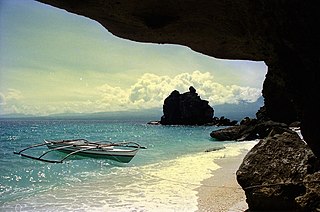
Negros Oriental, officially the Province of Negros Oriental, is a province in the Philippines located in the Central Visayas region. Its capital is the city of Dumaguete. It occupies the southeastern half of the large island of Negros, and borders Negros Occidental, which comprises the northwestern half. It also includes Apo Island, a popular dive site for both local and foreign tourists.

Negros Occidental, officially the Province of Negros Occidental (Hiligaynon: Kapuoran sang Nakatungdang Negros (Negros Occidental; Tagalog: Lalawigan ng Kanlurang Negros, is a province in the Philippines located in the Western Visayas region. Its capital is the city of Bacolod, of which it is geographically situated and grouped under by the Philippine Statistics Authority, but remains politically independent from the provincial government. It occupies the northwestern half of the large island of Negros, and borders Negros Oriental, which comprises the southeastern half. Known as the "Sugarbowl of the Philippines", Negros Occidental produces more than half the nation's sugar output.

Bacolod, officially the City of Bacolod, is a 1st class highly urbanized city in the region of Western Visayas, Philippines. It is the capital of the province of Negros Occidental, where it is geographically situated but governed administratively independent.

Western Visayas is an administrative region in the Philippines, numerically designated as Region VI. It consists of six provinces and two highly urbanized cities. The regional center is Iloilo City. The region is dominated by the native speakers of four Visayan languages: Hiligaynon, Kinaray-a, Aklanon and Capiznon. The land area of the region is 20,794.18 km2 (8,028.68 sq mi), and with a population of 7,954,723 inhabitants, it is the second most populous region in the Visayas after Central Visayas.

Dumaguete, officially the City of Dumaguete, is a 2nd class component city and capital of the province of Negros Oriental, Philippines. According to the 2020 census, it has a population of 134,103 people. It is the most populous city and the smallest city by land area in Negros Oriental.
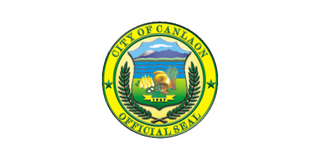
Canlaon, officially the City of Canlaon, is a 4th class component city in the province of Negros Oriental, Philippines. According to the 2020 census, it has a population of 58,822 people.

Kabankalan, officially the City of Kabankalan, is a 1st class component city in the province of Negros Occidental, Philippines. According to the 2020 census, it has a population of 200,198 people making it the second most populous city in Negros Occidental next to Bacolod.

The Negros Revolution, commemorated and popularly known as the Fifth of November or Negros Day, was a political movement that in 1898 created a government on Negros Island in the Philippines, ending Spanish control of the island and paving the way for a republican government run by the Negrense natives. The newly established Negros Republic lasted for approximately three months. American forces landed on the island unopposed on February 2, 1899, ending the island's independence. Negros was then annexed to the Philippine Islands on 20 April 1901.

The following outline is provided as an overview of and topical guide to the Philippines:

The Diocese of Bacolod is a Latin Church ecclesiastical territory or diocese of the Roman Catholic Church in Negros Occidental, Philippines. A suffragan of the Archdiocese of Jaro, its jurisdiction covers most of the northwestern towns and cities of the province of Negros Occidental namely, as far as Victorias City in the north and the Municipality of Hinigaran in the south.
The Negrenses are the native cultural group of the Philippine provinces of Negros Occidental, Negros Oriental and Siquijor.

The 2016 Philippine presidential and vice presidential elections were held on Monday, May 9, 2016, as part of the 2016 general election. This was the 16th direct presidential election in the Philippines since 1935 and the fifth sextennial presidential election since 1992.
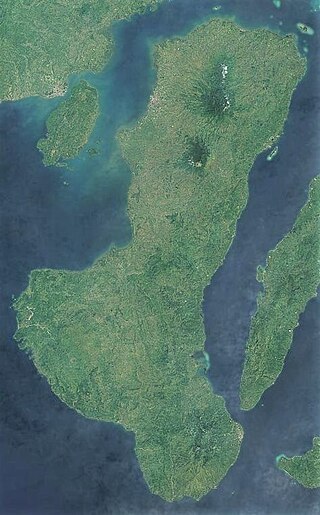
Negros is the fourth largest and third most populous island in the Philippines, with a total land area of 13,309 km2 (5,139 sq mi). Negros is one of the many islands of the Visayas, in the central part of the country. The predominant inhabitants of the island region are mainly called Negrenses. As of 2020 census, the total population of Negros is 4,656,945 people.

Central Visayas is an administrative region in the Philippines, numerically designated as Region VII. It consists of four provinces: Cebu, Bohol, Negros Oriental, and Siquijor. The region also has three highly urbanized cities: Cebu City, Lapu-Lapu, and Mandaue.
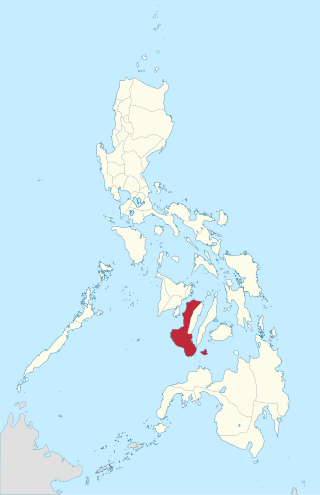
Negros was an administrative division of the Philippines, existing as a military district from 1734 to 1865, and a politico-military province from 1865 to 1890.

Capitol Central, previously called the Negros Occidental Provincial Capitol Complex, is a government complex and mixed-use estate centered around the Negros Occidental Provincial Capitol, currently co-managed with Ayala Land. Certain portions are leased or sold to Ayala Land, as part of their industrial estate in Bacolod, Philippines.
The Negros killings were a series of targeted assassinations carried out by unidentified gunmen in the provinces of Negros Oriental and Negros Occidental in the Philippines. Some of the victims involved were suspected Communists or sympathizers. Following the killings, Memorandum Order No. 32 was signed by Executive Secretary Salvador Medialdea on November 23, 2018, upon the orders of President Rodrigo Duterte deploying additional troops to the provinces of Negros Oriental, Negros Occidental, Samar, and the Bicol Region to "suppress sporadic acts of violence" allegedly committed by lawless groups and to "prevent such violence from spreading and escalating elsewhere in the country." Even after the memorandum was signed, the incidence of killings continued. According to the Defend Negros Movement, the first recorded extrajudicial killing on Negros Island was Alexander Ceballos on January 20, 2017. The group also alleged that at least 84 persons have been killed since 2017.
COVID-19 community quarantines in the Philippines were a series of stay-at-home orders and cordon sanitaire measures that were implemented by the government of the Philippines through its Inter-Agency Task Force for the Management of Emerging Infectious Diseases (IATF-EID).


